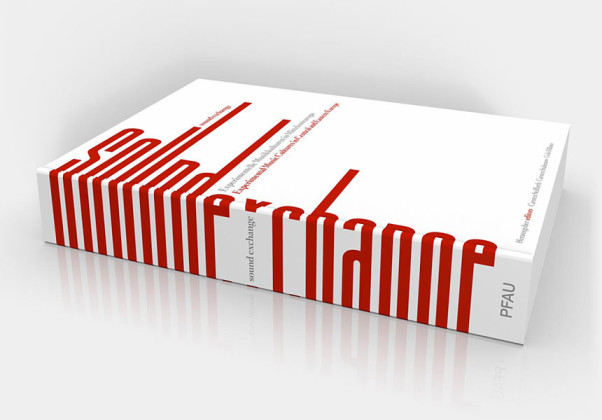Siegfried Kracauer: The Mass Ornament: Weimar Essays (1963/1995)
Filed under book | Tags: · 1920s, 1930s, cinema, cultural criticism, cultural politics, dance, everyday, film theory, germany, literature, photography, weimar republic

“Siegfried Kracauer was one of the twentieth century’s most brilliant cultural critics, a daring and prolific scholar, and an incisive theorist of film. In this volume his finest writings on modern society make their long-awaited appearance in English.
This book is a celebration of the masses–their tastes, amusements, and everyday lives. Taking up themes of modernity, such as isolation and alienation, urban culture, and the relation between the group and the individual, Kracauer explores a kaleidoscope of topics: shopping arcades, the cinema, bestsellers and their readers, photography, dance, hotel lobbies, Kafka, the Bible, and boredom. For Kracauer, the most revelatory facets of modern life in the West lie on the surface, in the ephemeral and the marginal. Of special fascination to him is the United States, where he eventually settled after fleeing Germany and whose culture he sees as defined almost exclusively by “the ostentatious display of surface.”
With these essays, written in the 1920s and early 1930s and edited by the author in 1963, Kracauer was the first to demonstrate that studying the everyday world of the masses can bring great rewards. The Mass Ornament today remains a refreshing tribute to popular culture, and its impressively interdisciplinary essays continue to shed light not only on Kracauer’s later work but also on the ideas of the Frankfurt School, the genealogy of film theory and cultural studies, Weimar cultural politics, and, not least, the exigencies of intellectual exile.
In his introduction, Thomas Levin situates Kracauer in a turbulent age, illuminates the forces that influenced him–including his friendships with Walter Benjamin, Theodor Adorno, and other Weimar intellectuals–and provides the context necessary for understanding his ideas. Until now, Kracauer has been known primarily for his writings on the cinema. This volume brings us the full scope of his gifts as one of the most wide-ranging and penetrating interpreters of modern life.”
Originally published in German as Das Ornament der Masse: Essays, Suhrkamp Verlag, 1963
Translated, Edited, and with an Introduction by Thomas Y. Levin
Publisher Harvard University Press, 1995
ISBN 0674551621
416 pages
Paul Betts: The Authority of Everyday Objects: A Cultural History of West German Industrial Design (2004)
Filed under book | Tags: · aesthetics, bauhaus, cold war, design, germany, industrial design, weimar republic

From the Werkbund to the Bauhaus to Braun, from furniture to automobiles to consumer appliances, twentieth-century industrial design is closely associated with Germany. In this pathbreaking study, Paul Betts brings to light the crucial role that design played in building a progressive West German industrial culture atop the charred remains of the past. The Authority of Everyday Objects details how the postwar period gave rise to a new design culture comprising a sprawling network of diverse interest groups—including the state and industry, architects and designers, consumer groups and museums, as well as publicists and women’s organizations—who all identified industrial design as a vital means of economic recovery, social reform, and even moral regeneration. These cultural battles took on heightened importance precisely because the stakes were nothing less than the very shape and significance of West German domestic modernity. Betts tells the rich and far-reaching story of how and why commodity aesthetics became a focal point for fashioning a certain West German cultural identity. This book is situated at the very crossroads of German industry and aesthetics, Cold War politics and international modernism, institutional life and visual culture.
Publisher University of California Press, 2004
Weimar and Now: German Cultural Criticism Series
ISBN 0520240049, 9780520240049
348 pages
Sound Exchange: Anthology of Experimental Music Cultures in Central and Eastern Europe 1950-2010 (2012) [English/German]
Filed under book | Tags: · central europe, czech republic, east-central europe, eastern europe, electroacoustic music, electronic music, estonia, experimental music, germany, hungary, latvia, lithuania, music, music history, poland, radio art, slovakia, sound art, sound recording

“The long traditions of experimental music cultures in Central and Eastern Europe are diverse and multifaceted, but have been difficult to access until now. With contributions from selected music, media and cultural studies specialists from eight countries, this anthology bundles together elements of unearthing material locally and documents current positions and historical finds by protagonists, as well as musical aesthetic qualities in the history of musical experiments in Central and Eastern Europe. The anthology pursues commonalities and singularities and discusses their relationship with the international history of experimental music.
The often barely known musical and artistic positions portrayed here show a wide stylistic and aesthetic spectrum of electro-acoustic music, composed and improvised music, musical media art and audio art from 60 years of experimental musical culture in the context of decades-long political repression and an atmosphere of increasing openness and international networking following 1989.”
With contributions by Antoni Beksiak, Balázs Kovács, Daiga Mazvērsīte, Gerhard Lock, Hans-Gunter Lock, Māra Traumane, Martin Flašar, Michal Rataj, Miloš Vojtěchovský, Monika Pasiecznik, Pavel Klusák, Slávo Krekovič, Tautvydas Bajarkevicius, Viestarts Gailītis.
Edited by Carsten Seiffarth, Carsten Stabenow, and Golo Föllmer
Publisher PFAU, Saarbrücken, 2012
ISBN 9783897274877, 3897274876
400 pages
PDF (20 MB, added on 2019-1-25, via book website)
HTML (updated on 2019-1-31)

